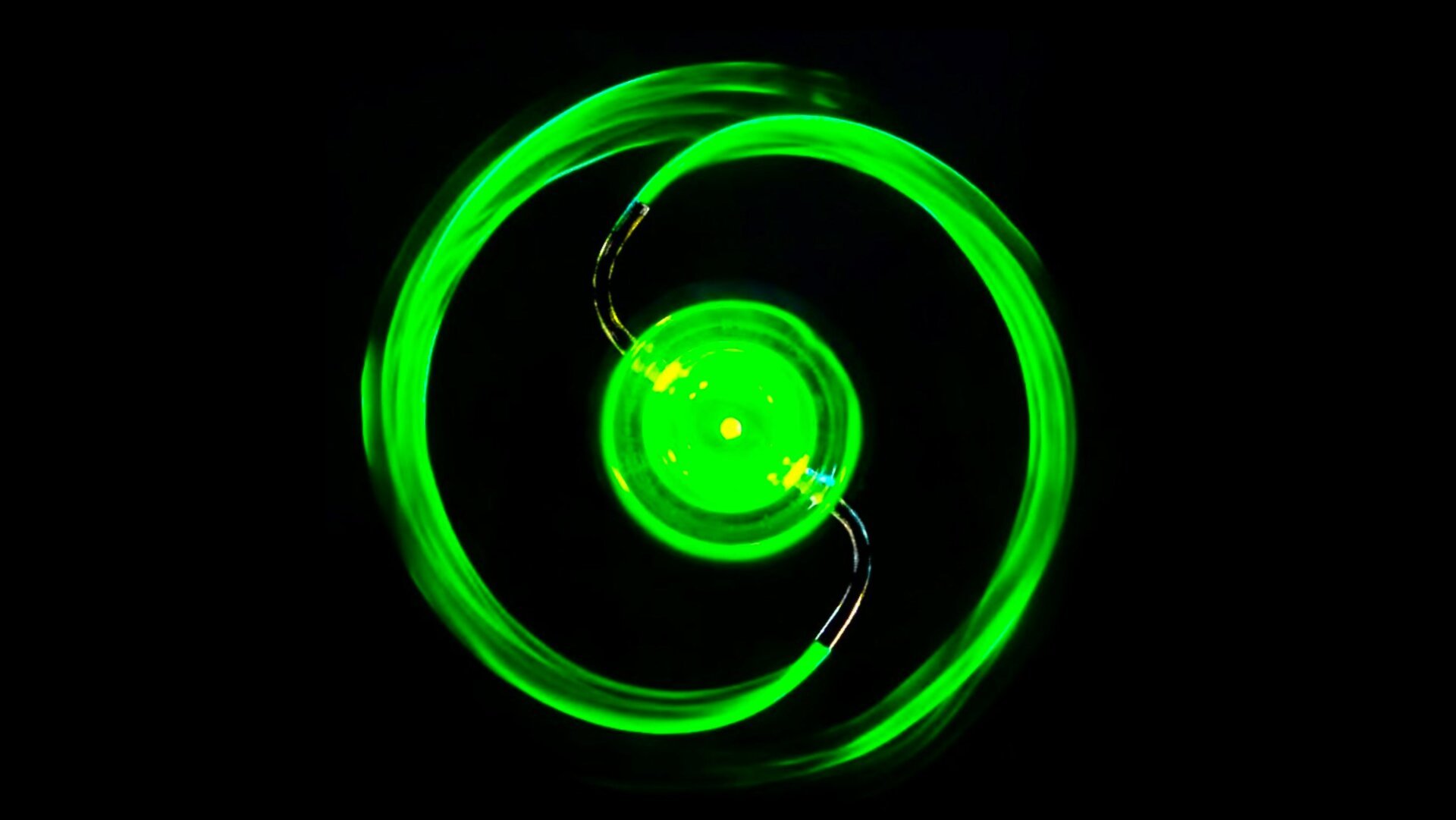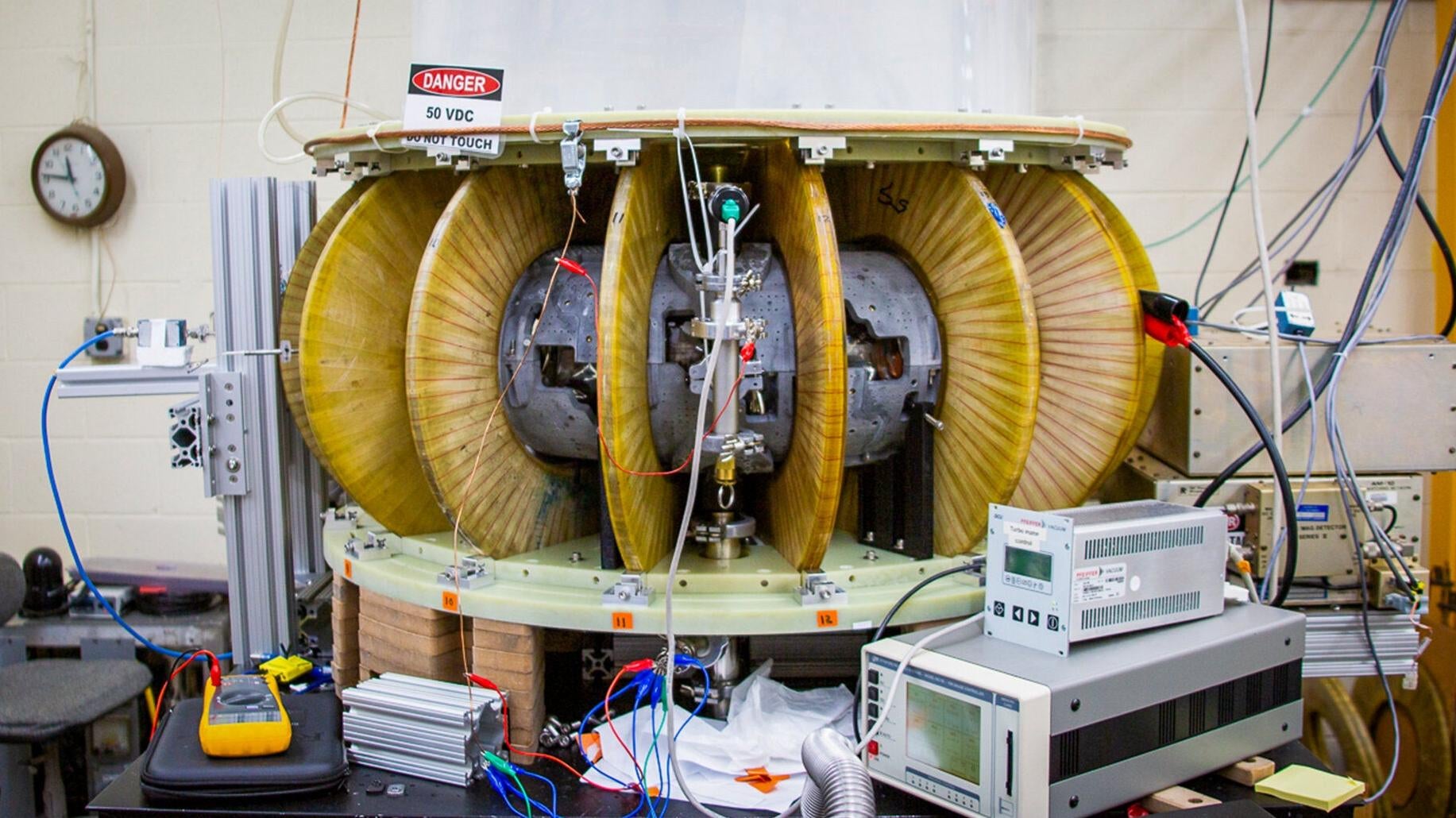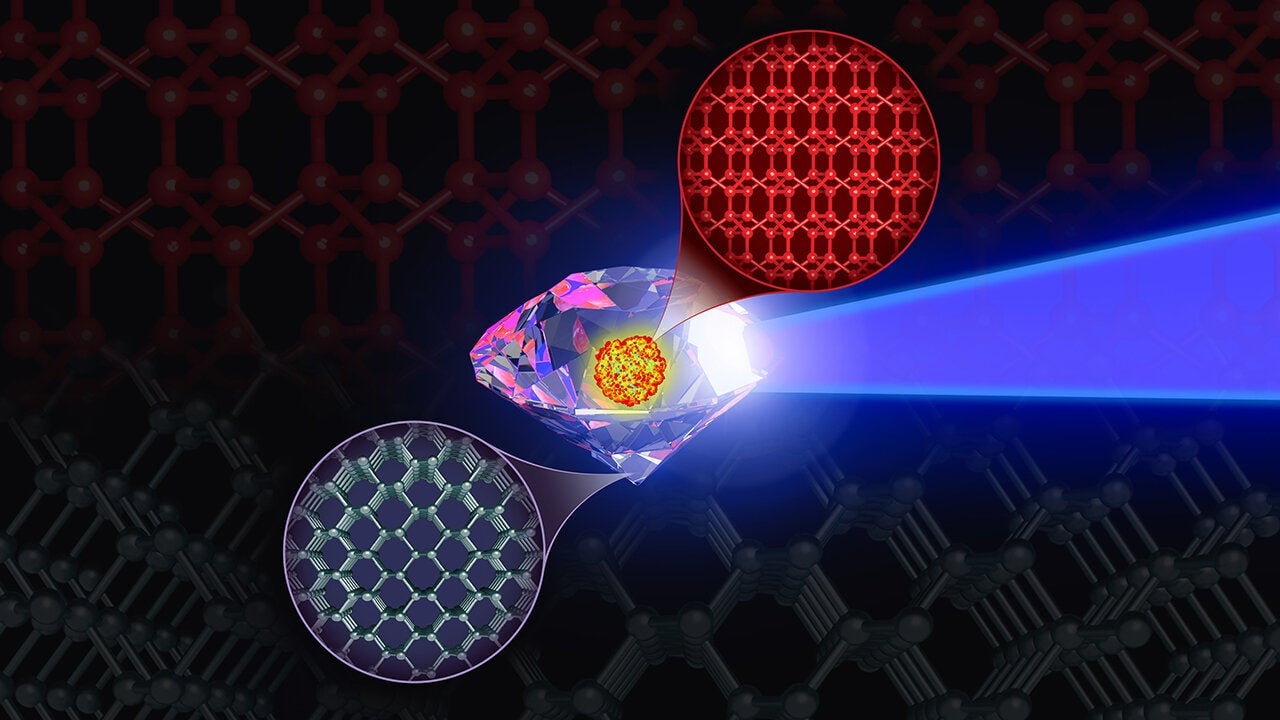Imagine being crammed into a packed subway car. Now, imagine being squeezed into a space millions of times smaller. That’s the reality for krypton atoms in a recent experiment at Ulm University. Researchers successfully confined krypton gas into a nanotube with a diameter 1/500,000th that of a human hair, effectively creating a one-dimensional gas. This groundbreaking research, published in the Journal of the American Chemical Society, offers unique insights into the behavior of matter at the atomic level.
 Krypton atoms confined within buckyball cages inside a nanotube.Krypton atoms encapsulated in buckyballs within a nanotube. Gif: University of Nottingham
Krypton atoms confined within buckyball cages inside a nanotube.Krypton atoms encapsulated in buckyballs within a nanotube. Gif: University of Nottingham
Observing Atoms in Real-Time: The Power of Nanotubes
“Carbon nanotubes offer an unprecedented ability to trap and precisely position individual atoms, enabling real-time observation at the single-atom level,” explains Andrei Khlobystov, a chemist at the University of Nottingham and co-author of the study. The team leveraged the high atomic number of krypton, making it readily visible under transmission electron microscopy (TEM). This allowed them to track the movement of individual krypton atoms within the nanotube.
Capturing Krypton: The Buckyball Cage
Capturing and controlling individual atoms, especially in a gaseous state where they move at the speed of sound, is a significant challenge. The researchers achieved this by utilizing buckminsterfullerene (buckyballs), soccer ball-shaped molecules composed of 60 carbon atoms. These buckyballs acted as individual cages, encapsulating the krypton atoms.
From 3D to 1D: Releasing the Krypton
The researchers then released the krypton atoms from their buckyball cages using two methods: heating to 2,192 degrees Fahrenheit (1,200 Celsius) or irradiating with an electron beam. Both techniques caused the buckyballs to fuse, aligning the released krypton atoms in a single file within the carbon nanotube. In this confined space, the individual definition between the atoms blurred, forming a uniform, one-dimensional gas. Paul Brown, director of the University of Nottingham’s Nanoscale and Microscale Research Centre, notes that “this is the first time, to our knowledge, that chains of noble gas atoms have been directly imaged, resulting in the creation of a one-dimensional gas within a solid material.”
Defining One Dimension: A Matter of Perspective
While technically the krypton within the nanotube still occupies a three-dimensional space due to its minute volume, its confinement within such a narrow diameter effectively renders it one-dimensional, similar to how one-dimensional strands of electrons traverse the Milky Way galaxy. This innovative approach to confining matter offers valuable insights into atomic interactions under extreme conditions.
Implications for Understanding Matter at its Limits
This research contributes significantly to our understanding of how matter behaves in extremely confined spaces. By studying these atomic interactions, scientists can gain valuable knowledge about the fundamental properties of matter at its limits, paving the way for advancements in nanotechnology and materials science.











